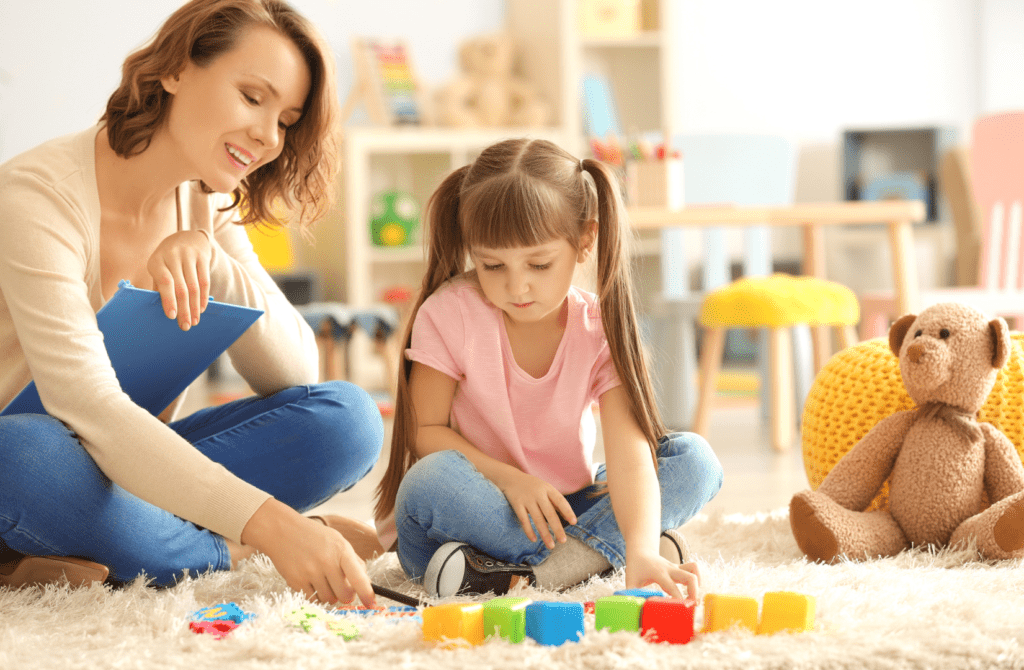8 Amazing Movement Activities for Speech and Language Development

Language development is a crucial aspect of a child’s growth and learning. While traditional methods like reading and writing play a significant role, incorporating movement activities can greatly enhance language development in children. Physical movement engages multiple senses, stimulates brain connections, and encourages active participation. In this blog, we will explore a variety of amazing movement activities that can be incorporated into everyday routines to foster language development in children.
1. Simon Says
Simon Says is a classic game that promotes both listening skills and language development. The game involves giving verbal instructions for children to follow. By incorporating action words and descriptive language, such as “Simon says jump high” or “Simon says hop like a bunny,” children not only listen attentively but also learn to understand and respond to different commands. This game helps improve vocabulary, comprehension, and the ability to follow directions, all of which are essential for language development.
2. Storytime Yoga
Storytime Yoga combines storytelling with yoga poses, creating a dynamic and interactive activity that promotes language development. Children can act out characters, imitate animals, and perform movements that correspond to the events in the story. This activity helps children develop their imagination, improve listening skills, and enhance body awareness. It also introduces them to new vocabulary and concepts related to the story, making language learning an engaging and memorable experience.
3. Charades
Charades is an entertaining game that encourages non-verbal communication and language comprehension. Children take turns acting out a word or phrase without speaking while others try to guess what it is. This game stimulates creativity, body language interpretation, and problem-solving skills. Additionally, it helps expand vocabulary as children learn new words and expressions through observation and context. Charades can be adapted to different themes or topics, allowing children to explore a wide range of words and concepts while having fun.
4. Dance and Sing Activities
Music and movement go hand in hand when it comes to language development. Dancing and singing to songs promote rhythm, coordination, and language skills simultaneously. Encourage children to sing along to their favourite tunes, perform gestures or dance steps, and even create their own lyrics. By engaging in these activities, children improve their vocabulary, pronunciation, and memory retention. The combination of movement and music enhances their ability to understand and express themselves through language, fostering creativity and confidence in communication.
5. Scavenger Hunt
A scavenger hunt is an exciting way to enhance language skills while promoting physical activity. Create a list of items or words for children to find within a designated area. Encourage them to communicate with each other and ask questions, such as “Is the object big or small?” or “What colour is it?” This activity fosters vocabulary expansion, communication skills, and teamwork. Additionally, as children explore their surroundings, they become more aware of their environment and develop a stronger connection between language and the world around them.
6. Puppet Show
Puppet shows are interactive and engaging activities that promote language development. Encourage children to create their own puppets using simple materials like socks or paper bags. They can then put on a show, narrating a story or engaging in dialogue using different voices for the characters. This activity enhances storytelling skills, creativity, and vocabulary as children express themselves through the puppets. It also encourages active listening and comprehension as they follow the storyline and interact with each other.

7. Nature Walk and Talk
Take children on a nature walk and encourage them to describe what they see, hear, and feel. Point out different objects, animals, or plants and engage in conversations about their characteristics, colors, and textures. This activity helps expand vocabulary, observational skills, and descriptive language. It also deepens children’s connection with nature and fosters a sense of curiosity and wonder, encouraging them to ask questions and explore the world around them.
8. Role Play
Role-playing activities provide opportunities for children to use language in real-life situations. Encourage them to act out different roles, such as a doctor, teacher, or chef, using props and costumes. They can engage in conversations, express their thoughts, and negotiate roles and responsibilities. Role play enhances language skills, social interaction, and problem-solving abilities. It also fosters imagination and creativity as children create their own scenarios and explore different roles and perspectives.

Incorporating movement activities into language development not only makes the learning process enjoyable but also maximizes its effectiveness. Simon Says, Storytime Yoga, Charades, Dance and Sing, and Scavenger Hunt are just a few examples of amazing movement activities that can be integrated into daily routines. By combining physical movement with language learning, children engage their senses, stimulate cognitive processes, and enhance their ability to comprehend, express, and communicate effectively. These activities encourage active participation, foster creativity, and provide a holistic approach to language development, ensuring that children have fun while acquiring essential language skills.
If you are interested in speech therapy services, please contact us: Therapy Services – Speech Improvement Center
If you are interested in speech therapy careers, please contact us: Employment Opportunities – Speech Improvement Center
Check our locations here: Locations – Speech Improvement Center